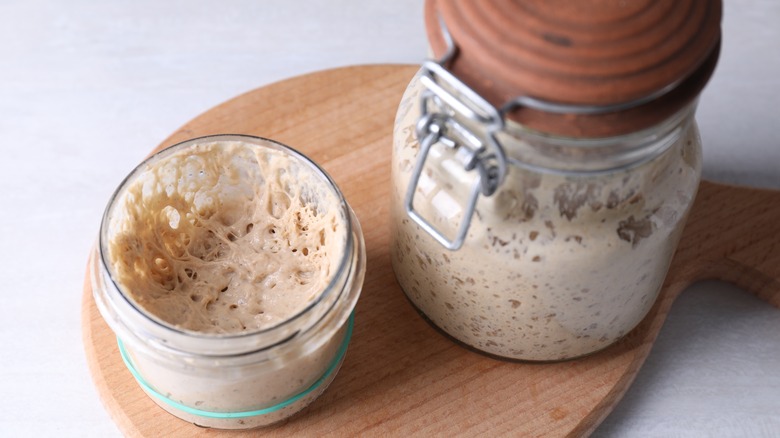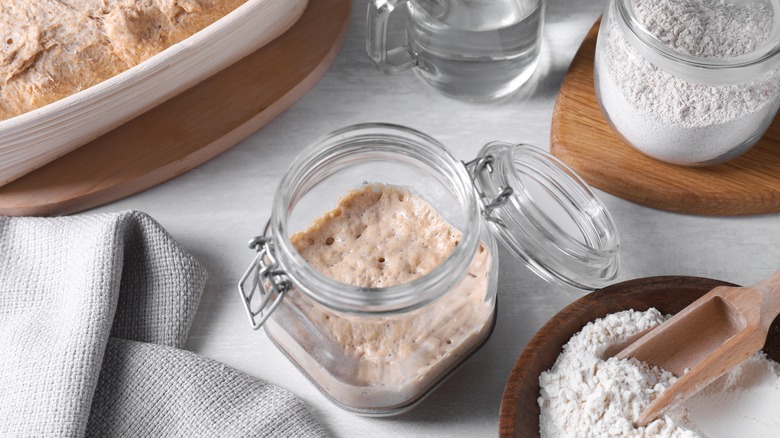What's That Gray Liquid In Your Sourdough Starter (And Do You Have To Throw It Out)?
If you've jumped on the sourdough bandwagon, you know there's a lot of thought and care that goes into keeping that homemade jar of starter active and happy. That's because the starter is full of wild yeast that is biding its time until you need it. As the starter waits for you to get your next batch of bread going, the yeast and lacto-bacteria in the sticky mass slowly feed on the starch left in the sticky mass. It's easy to see one sign of life — the air bubbles that are given off as a by-product of fermentation. One other natural process in the jar of starter is some alcohol and sour lactic acid that gathers in the jar; it's affectionately called "hooch" by bakers.
Hooch can range from a clearish color to very dark gray depending on how old your starter is and how long it's been since the yeast and bacteria were fed and replenished. It might look grim, but there's a lot of good sourdough flavor in hooch from the lacto-bacteria. It's part of the hydration in your baker's percentage, which is the ratio of flour to other important ingredients, like water. So don't discard it. Just stir it back into the starter before you feed it again.
Hooch means your starter is hungry
When you see hooch accumulate in your sourdough starter, it's a reminder that it's been a while since your yeast had a feeding. That's because the alcohol builds up very gradually. If you're working with your starter regularly, you might not have even noticed hooch. But there's always some present in the mix. The yeast actually need some oxygen to stay healthy and active. Having a layer of watery hooch on the top prevents air from entering the mixture. So keeping an eye out for hooch buildup helps you keep your starter happier.
Hooch turns dark because the stray proteins and sugars in it oxidize. Over time you'll see your hooch become a darker liquid, which is nothing to be concerned about. Instead, take that as a sign you'll need to do a couple of feedings to get your starter back to strength. However, do give your jar a sniff if you see a significant layer of dark hooch –- this can indicate a secondary fermentation, similar to vinegar. If the jar smells like fingernail polish remover or vinegar, that's when you should discard the hooch. You can keep feeding your starter as usual, and after several feed-discard cycles, you should be back to normal.

